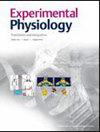利用MRI揭示心血管系统对脑血管健康的影响。
IF 2.8
4区 医学
Q2 PHYSIOLOGY
引用次数: 0
摘要
人类的脑血管系统经过精细调节,使局部血流变化满足大脑的需要,同时保护大脑免受全身血压变化的影响,无论是心跳时的剧烈变化还是长期的慢性变化。本文综述了脑血管的结构和功能,它们在疾病和神经退行性变中的作用以及MRI测量在探测它们中的作用。MRI方法测量脑血管生理学的各个方面被描述和放置在应用研究脑血管健康的背景下。强调了心血管系统将心脉波与脑血管疾病联系起来的作用以及机制知识的空白。本文章由计算机程序翻译,如有差异,请以英文原文为准。
Uncovering the impact of the cardiovascular system on cerebrovascular health using MRI.
Human cerebrovasculature is finely tuned to enable local changes in blood flow to meet the brain's demands, whilst protecting the brain from systemic changes in blood pressure, both acutely during a heartbeat and chronically over time. This review summarises cerebrovascular structure and function, their role in disease and neurodegeneration and the part MRI measurements can play in probing them. MRI methods to measure various aspects of cerebrovascular physiology are described and placed in context of applications studying cerebrovascular health. The role of the cardiovascular system linking the cardiac pulse wave to cerebrovascular disease and gaps in mechanistic knowledge are highlighted.
求助全文
通过发布文献求助,成功后即可免费获取论文全文。
去求助
来源期刊

Experimental Physiology
医学-生理学
CiteScore
5.10
自引率
3.70%
发文量
262
审稿时长
1 months
期刊介绍:
Experimental Physiology publishes research papers that report novel insights into homeostatic and adaptive responses in health, as well as those that further our understanding of pathophysiological mechanisms in disease. We encourage papers that embrace the journal’s orientation of translation and integration, including studies of the adaptive responses to exercise, acute and chronic environmental stressors, growth and aging, and diseases where integrative homeostatic mechanisms play a key role in the response to and evolution of the disease process. Examples of such diseases include hypertension, heart failure, hypoxic lung disease, endocrine and neurological disorders. We are also keen to publish research that has a translational aspect or clinical application. Comparative physiology work that can be applied to aid the understanding human physiology is also encouraged.
Manuscripts that report the use of bioinformatic, genomic, molecular, proteomic and cellular techniques to provide novel insights into integrative physiological and pathophysiological mechanisms are welcomed.
 求助内容:
求助内容: 应助结果提醒方式:
应助结果提醒方式:


